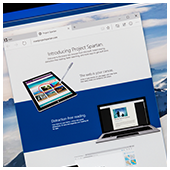
Support is defined as providing assistance, encouragement, or comfort to help someone achieve a certain goal. For Mac’s version of Microsoft Office, support comes in the form of add-ins that aim to enhance user experience. Although usability testing is currently underway, you can still read about the latest developments here:
Office add-ins are applications running within the suite’s constituent programs that provide features not available by default.
The post Add-in support for Mac’s Microsoft Office appeared first on Complete Technology Resources, Inc..


Support is defined as providing assistance, encouragement, or comfort to help someone achieve a certain goal. For Mac’s version of Microsoft Office, support comes in the form of add-ins that aim to enhance user experience. Although usability testing is currently underway, you can still read about the latest developments here:
Office add-ins are applications running within the suite’s constituent programs that provide features not available by default. In terms of usage, they’re similar to browser extensions, but add-ins are tailored to the tasks users carry out in Office programs such as Word, PowerPoint, and Outlook. For example, one popular add-in allows users to look up words and phrases on Wikipedia without leaving Word. Another introduces additional chart types that can be used in Excel.
Add-ins are usually free, but some require either a one-off payment or a monthly subscription. If Microsoft wants its Office Store to flourish, it makes a lot of sense to provide support for add-ins to the Mac version of the Office Suite. According to a report from MS Power User, to access add-ins, Mac users need to be members of the Insider program and opt into its Fast Ring. From there, you should check that the installation of your Office for Mac is build 170124 or later.
You can find the “Add-ins” option from the Insert menu in Word, Excel, or PowerPoint, and then select the store. Once at the storefront, find an add-in you’re looking for and install it. Currently, there’s no word on when add-ins will be available to all Office users on the Mac platform. But if the functionality is ready for public testing, it’s safe to assume the official release is already on its way.
If you have further questions or would like to be notified of the latest advancements, feel free to get in touch with us!
The post Add-in support for Mac’s Microsoft Office appeared first on Complete Technology Resources, Inc..

 Kicking off the three-year countdown to end extended user support, Microsoft is bringing an end to the Windows 7 era -- and for good reason. Because it’s so outdated, security patches are no longer able to keep it safe. Without a solid operating system, not only will users work at sluggish speeds, but they’ll also be susceptible to numerous cyber threats that could ruin their business.
Kicking off the three-year countdown to end extended user support, Microsoft is bringing an end to the Windows 7 era -- and for good reason. Because it’s so outdated, security patches are no longer able to keep it safe. Without a solid operating system, not only will users work at sluggish speeds, but they’ll also be susceptible to numerous cyber threats that could ruin their business. Windows 10 had a rough year. It’s been flooded with numerous complaints from users claiming that they were "tricked" into upgrading Windows 7 and uncontrollable OS updates. The new year is a time for new things, and that’s exactly what Microsoft is planning to do in 2017. It’s been speculated that Microsoft plans on addressing certain issues, but there are still many that are left unattended to.
Windows 10 had a rough year. It’s been flooded with numerous complaints from users claiming that they were "tricked" into upgrading Windows 7 and uncontrollable OS updates. The new year is a time for new things, and that’s exactly what Microsoft is planning to do in 2017. It’s been speculated that Microsoft plans on addressing certain issues, but there are still many that are left unattended to. Microsoft Edge has recently been changed and updated. While this is nothing unusual, what is unusual is the sudden choice to no longer be as Adobe Flash-friendly as it once was. The blocking of Adobe Flash by Microsoft's primary web browser can have significant repercussions for businesses and web users alike. As a business owner, you may wonder whether your website and your various bells and whistles will be affected by these changes. In order to understand what is going on with Microsoft Edge and its relationship with Adobe Flash, get to know more about the rationale behind the decision as well as how your business may be adversely impacted.
Microsoft Edge has recently been changed and updated. While this is nothing unusual, what is unusual is the sudden choice to no longer be as Adobe Flash-friendly as it once was. The blocking of Adobe Flash by Microsoft's primary web browser can have significant repercussions for businesses and web users alike. As a business owner, you may wonder whether your website and your various bells and whistles will be affected by these changes. In order to understand what is going on with Microsoft Edge and its relationship with Adobe Flash, get to know more about the rationale behind the decision as well as how your business may be adversely impacted.